Eating seasonally is a concept relating to food access that relies on eating food that is grown as locally as possible. In many ways, it gets back to how our grandparents, great grandparents, and generations before them ate.

They ate by eating the food that grew where they lived, and not eating food from across the country or across the world.
However, many people live where food, especially fresh food, can only be produced for part of the year. The growing season may be half of the year or less.
The only way to eat a lot of what is grown in your locale all year long is to utilize some form of preservation.
But is that still eating seasonally?
Does home preserving or even the preserving of fresh, local foods have a benefit? And can you think of it as eating seasonally?
Does it capture the benefits and motivations of seasonal eating?
Jump to:
- Is Home Preserving Like Freezing, Dehydrating, and Canning Seasonal Eating?
- Commercial produce is picked long before peak nutrition
- Home Preserving Embraces the Purpose of Eating With the Seasons
- How can this be true?
- Preserving the best of the best quality and nutrition
- Skip the waxes, gasses, and additives, and manipulation
- Minimal vs. Ultra processed food
- Home Preservation and Seasonal Eating from an Environmental Viewpoint
- Plastic and packaging reduction
- Really the only way to eat year round if your goal is local and environmentally sustainable
- How did they do it?
Is Home Preserving Like Freezing, Dehydrating, and Canning Seasonal Eating?
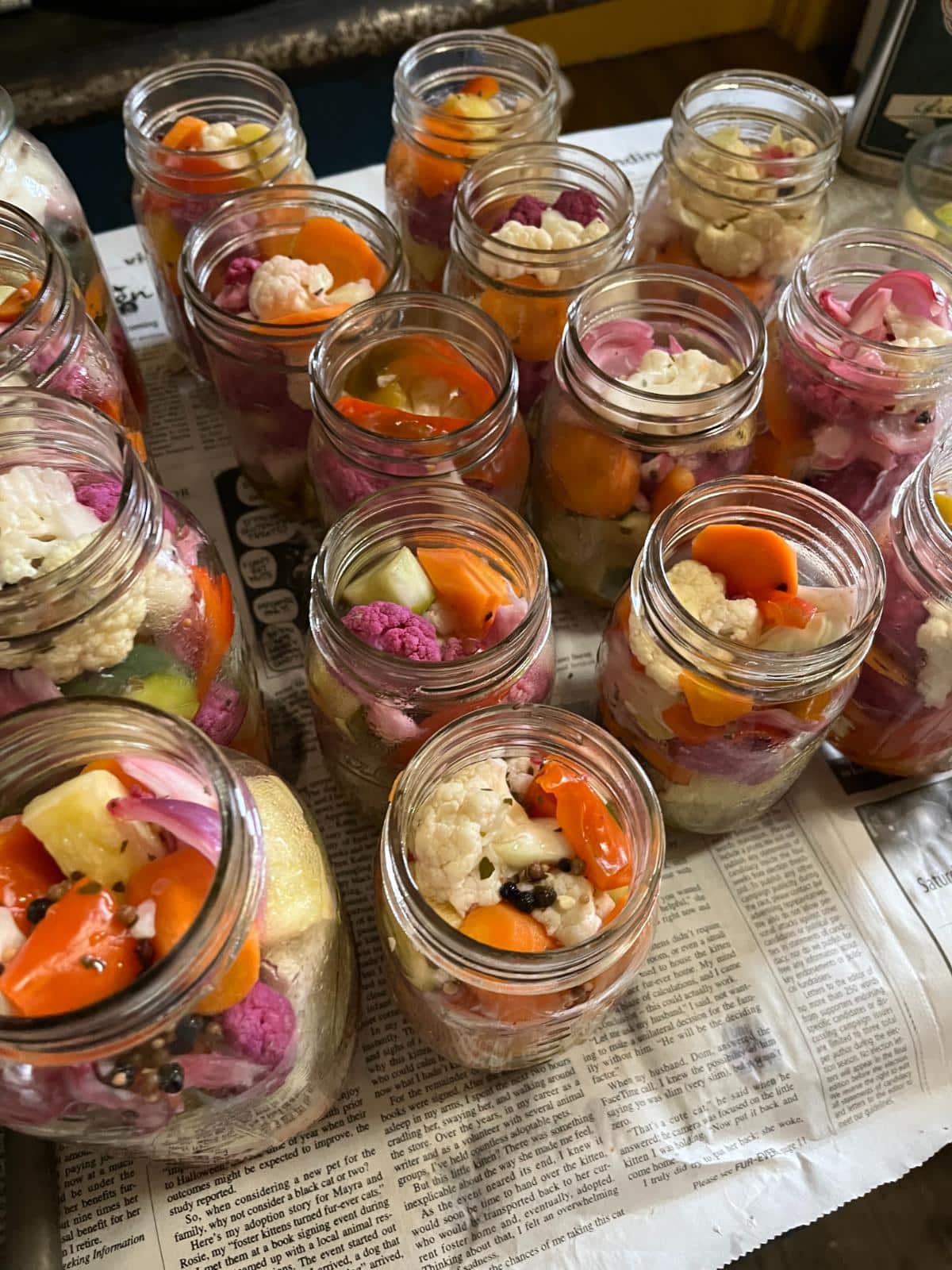
In a word? Yes.
Preserving fresh, seasonal produce is preserving foods at their peak of ripeness and nutrition. It’s preserving produce that is allowed to be fully developed in the field (and not in some process after picking and shipping).
Preserving captures that high peak of freshness and quality and keeps it. Local or homegrown peak vegetables have higher nutrition even after preserving than unripe, shipped, and artificially ripened foods do.
Healthline states that “It’s important to recognize…that many canned and frozen fruits and vegetables are harvested and packaged at their peak. Frozen foods generally don’t lose nutrients, and some foods may even have higher levels of some nutrients after freezing. Therefore, these foods are viable choices for seasonal eating as well.”
Commercial produce is picked long before peak nutrition
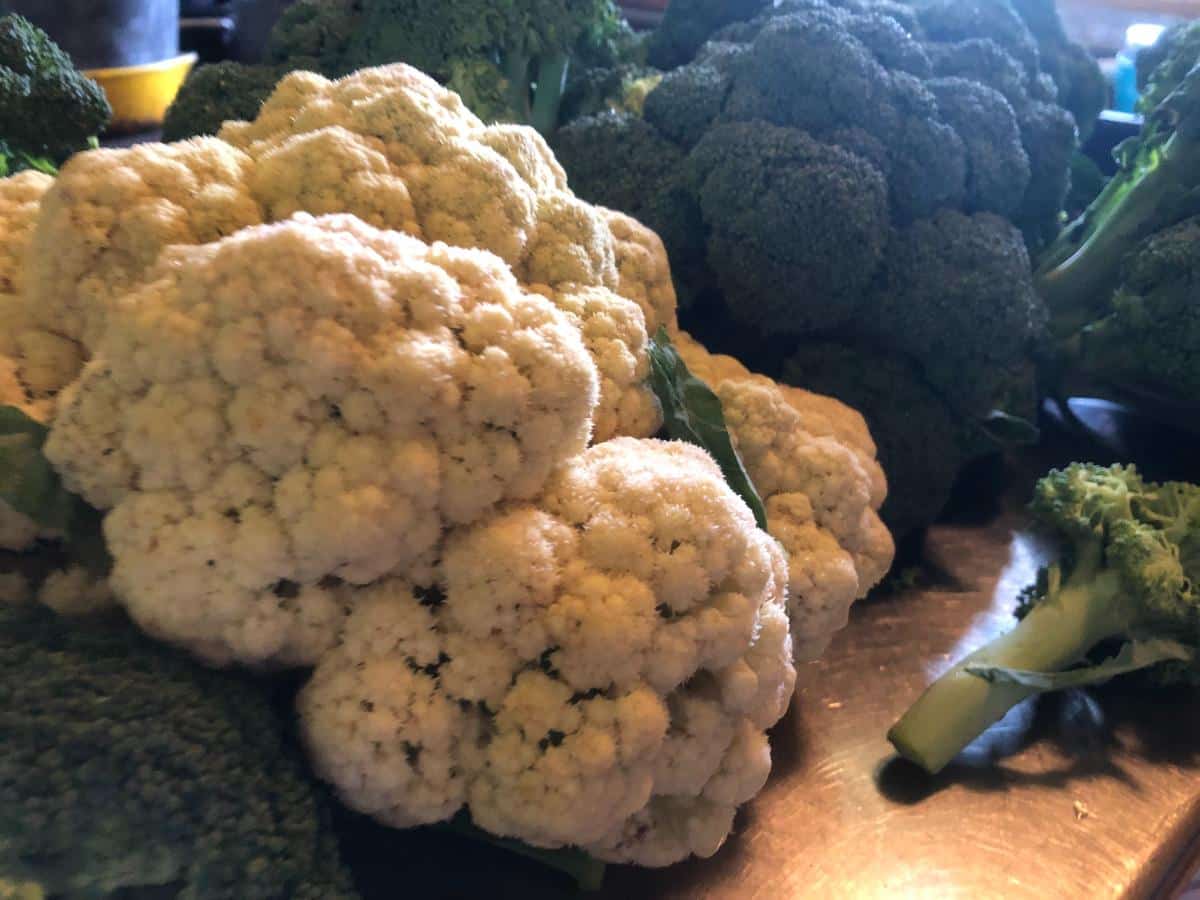
Commercial produce is typically picked underripe so that it can hold for days and weeks without spoiling.
The fruits and vegetables that are able to ripen off the plant (climeractic) are often left unripe in storage, and then have ethylene gas pumped through to cause them to ripen in a process that mimics, but is not, the natural gas production cycle that would naturally ripen them.
In addition to ethylene gas infusion, there are a number of pre- and post-harvest growth regulators that large growers use to manipulate ripening in produce. These allow fruits and vegetables to be shipped and held for long periods of time.
Studies show that this type of manipulated, induced ripening does not compare nutritionally to the nutrient content of fruits and vegetables that ripen in the field.
Then, there are fruits and vegetables that are non-climactic and cannot ripen after they are picked. Strawberries, cherries, grapes, and many others cannot ripen anymore after they are picked. This is why you never feel like” fresh” grocery store berries taste fully ripe. They aren’t!
- Here are 24 foods that cannot ripen off the vine and are as good as they will ever get when picked (and it’s a downhill nutritional slide from there).
- Here are 23 foods that do ripen after harvest and are often manipulated into holding and ripening during the shipping process.
Home Preserving Embraces the Purpose of Eating With the Seasons
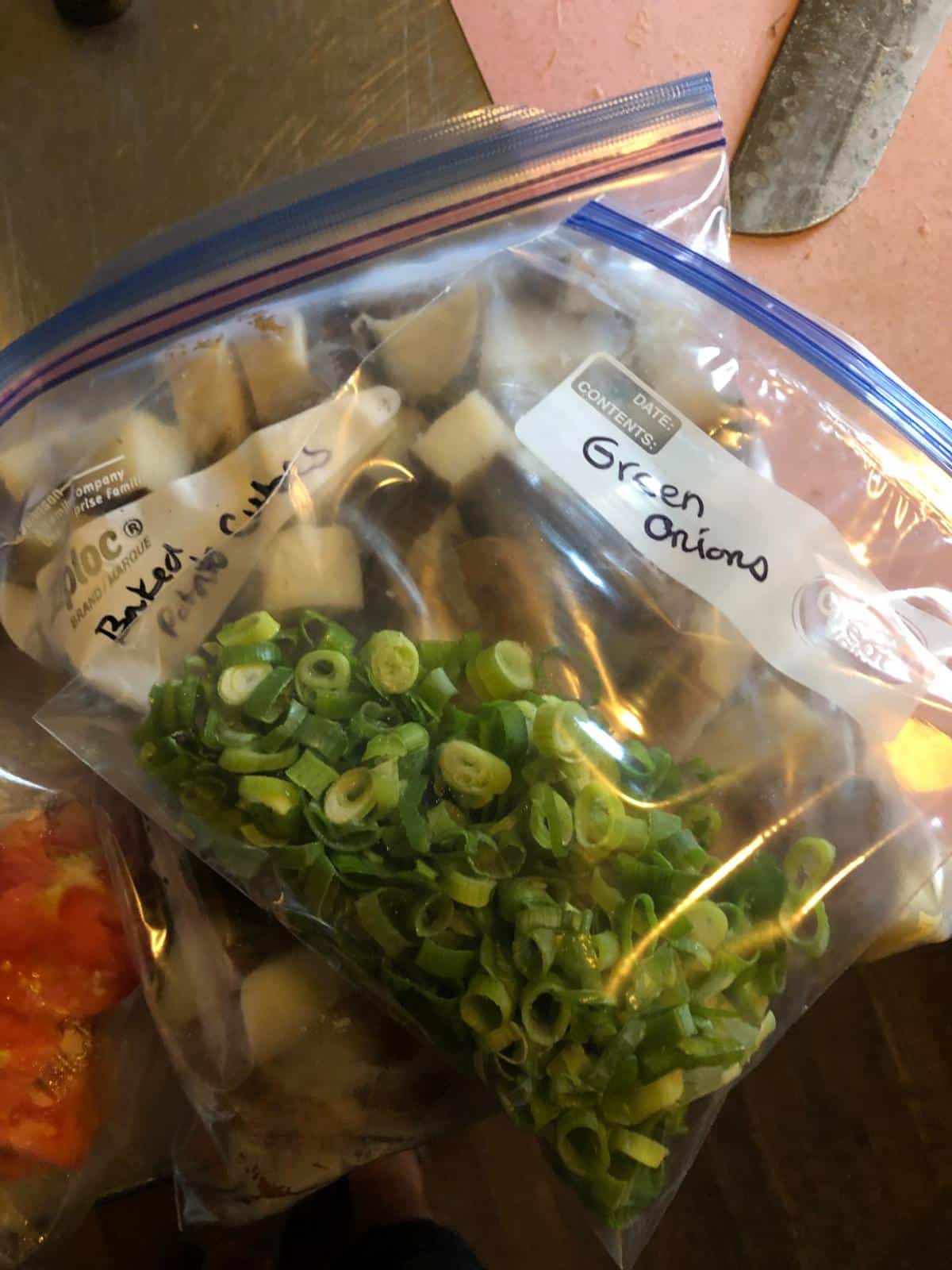
Though there are times of year when you may not be able to step outside to pick fresh broccoli or to stop by the local farmers’ market or farm store for today’s pick, you can still eat a local or even hyper-local diet and embrace the seasonal eating movement and its many benefits.
Choosing nutrient dense local food and then preserving it to keep that high level of nutrition still embraces the spirit of eating seasonally: sustainability, freshness, peak flavor and nutrition, and lowering the impact on the environment of food transportation, treatment, and production.
How can this be true?
It’s true because you can still eat a diet that is highly concentrated in local food. You still access that food at its peak of freshness. Properly preserved food that is at its peak when it is preserved will still retain a high level of nutrition.
It is possible that foods that start higher in ripeness and nutrition, even after they are preserved, may beat out “fresh” foods that are not allowed to ripen naturally and that do not develop their potential nutritional levels, to begin with.
Preserving the best of the best quality and nutrition
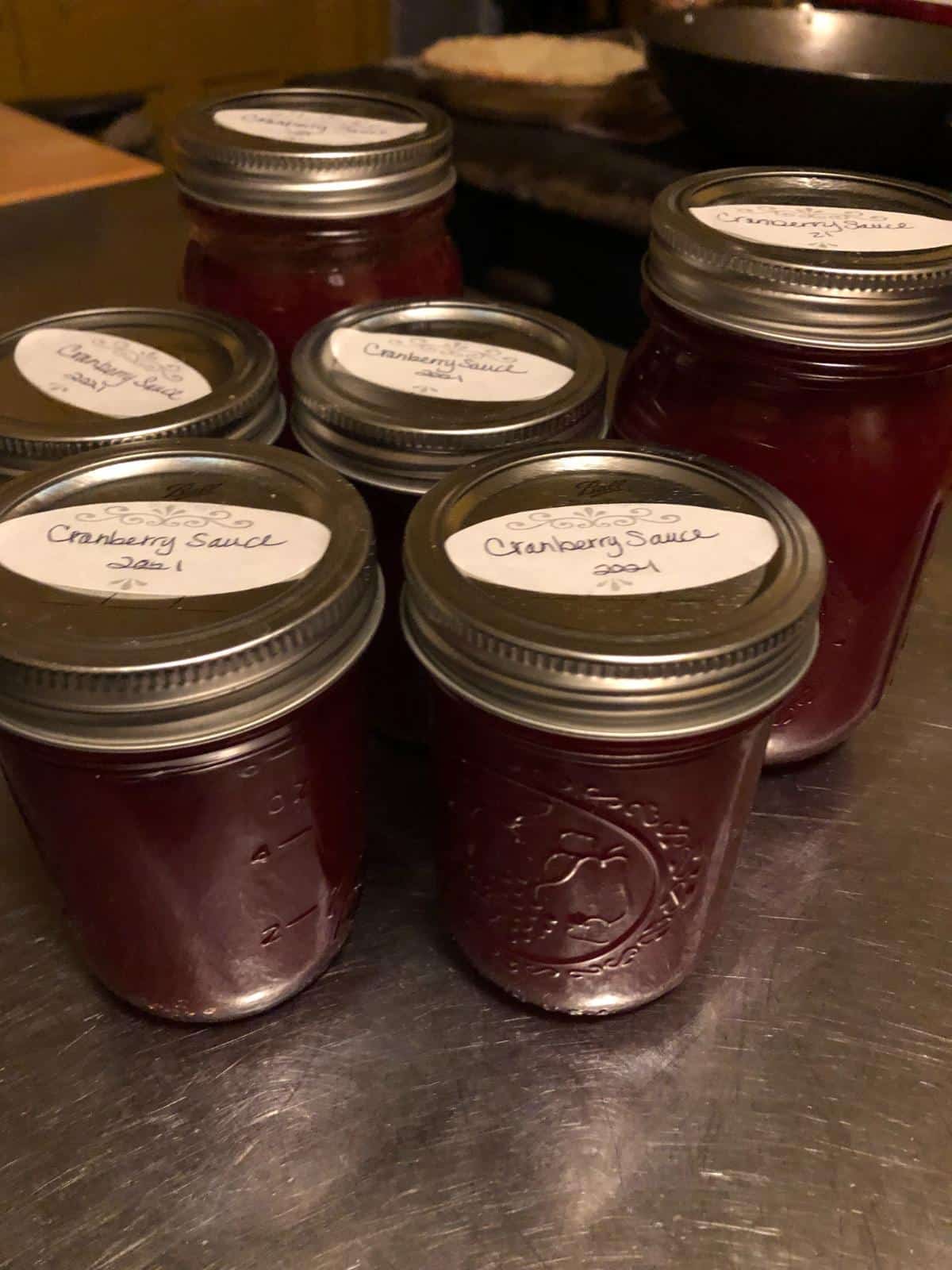
While it is true that any type of preserving -- like freezing or canning -- does diminish some of the benefits of eating peak fresh foods, it is also true that the sooner food is preserved and the less time it stays in travel and storage, the better able you are to keep as much of that local fresh nutrition.
Because of modern harvest timing and techniques, commercial “fresh” foods are often picked unripe. Many are varieties that start lower in nutrition anyway, because they ship and store better that way.
Foods that travel thousands of miles and take days or weeks to get to you are not equal to fresh foods that are allowed to ripen and develop nutritionally through natural means.
Skip the waxes, gasses, and additives, and manipulation
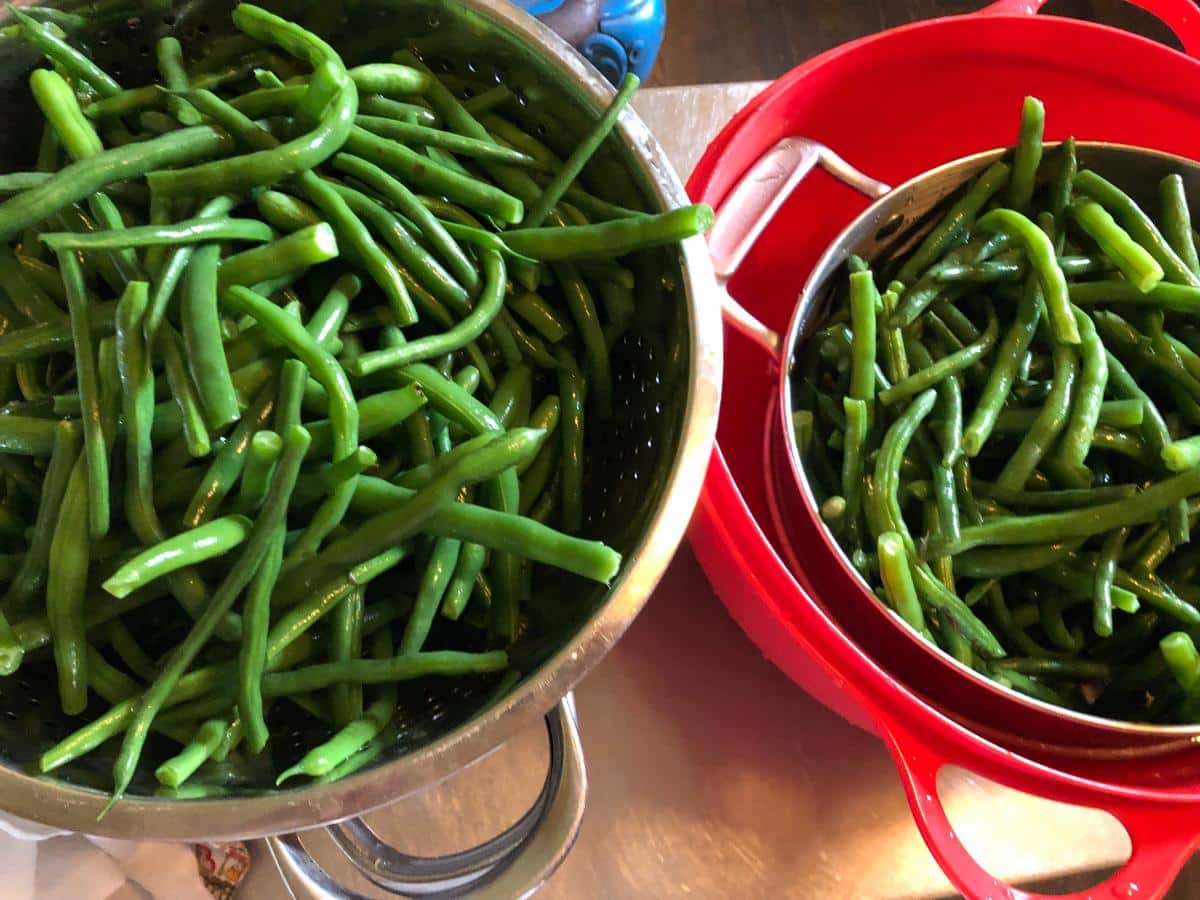
The “fresh” produce on grocery store shelves is often coated with wax (that is not meant to be eaten). That wax keeps the color of the vegetables looking fresh when it isn’t.
Nutritional breakdown increases in traveled foods as a result of long exposure to artificial light, temperature variations that occur in shipping and handling, loading, unloading, shelf stocking, and even air quality changes.
The University of New Hampshire states that locally grown food is less likely to contain additives aimed at maintaining freshness (or the appearance of freshness). Local food from smaller growers is unlikely to contain added enzymes, coatings, flavorings, and preservatives. It doesn’t need to, because it doesn’t have thousands of miles to travel or weeks and weeks of survival ahead of it. It’s probably going to market the same day or within 24 hours.
Even organic store produce is less nutritious (although also not subject to pesticide and chemical exposure). The nutritional content of commercial organic fruits and vegetables on a store shelf is less than locally grown produce. Because, although it is grown differently and with limited chemical exposure in the field, it may still be coated in wax, picked underripe, and not allowed to develop to its peak of nutrition.
There is also a nutritional difference in foods based on the quality and enrichment of the soil in which food is grown. Large commercial produce farms typically do not match that of smaller producers and produce grown through regenerative practices.
Minimal vs. Ultra processed food
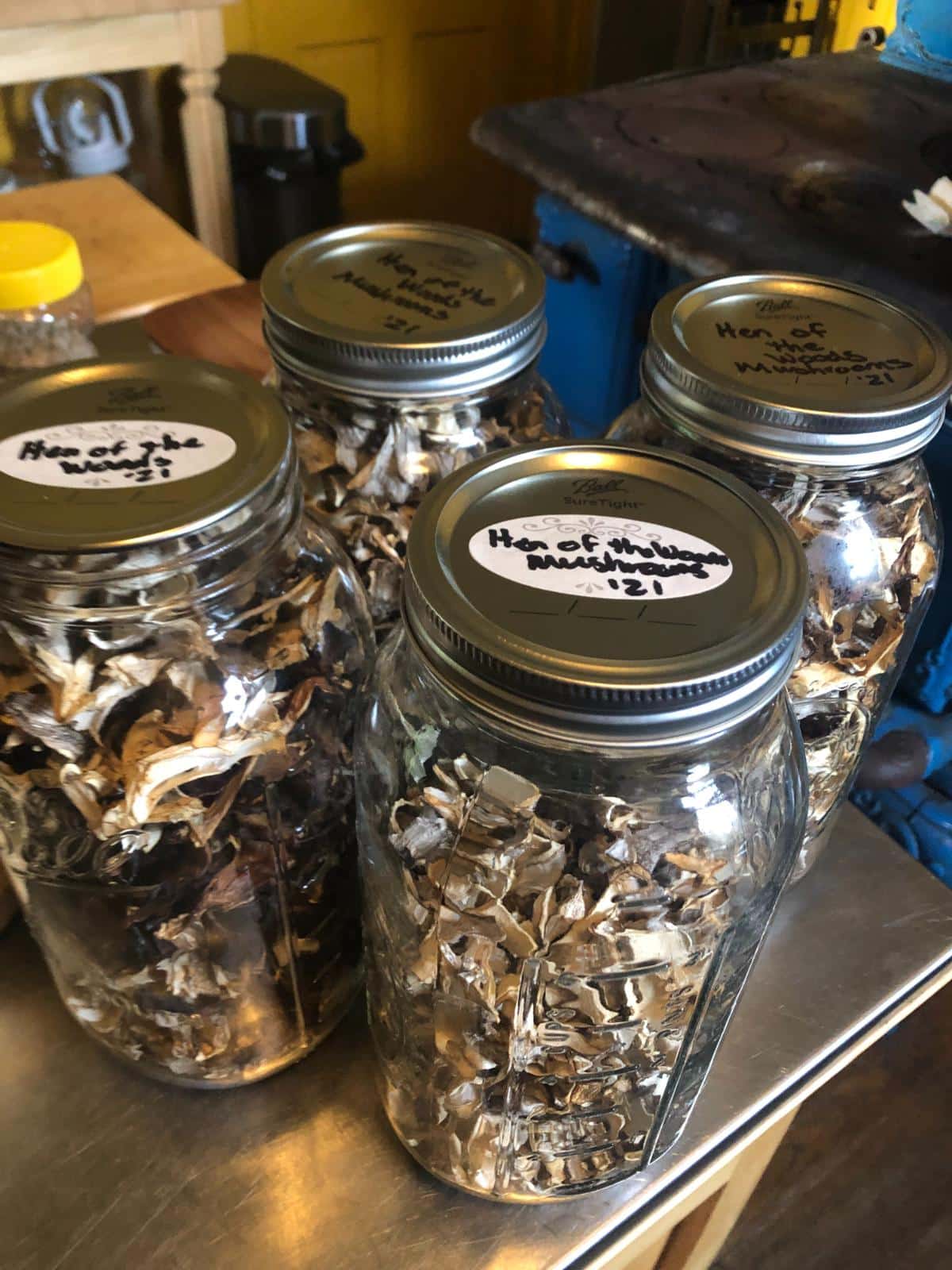
In the absence of close to fresh food, studies show that people turn to highly processed foods instead.
Minimally processed and preserved foods are a much better answer. These are foods that are picked locally at full ripeness, nutrition, and development and stored in appropriate long-term storage (such as squash stored in a cold storage area like a cool basement or root cellar).
Home preservation techniques may technically be categorized as “processed,” but they contain few to none of the additives, enzymes, and preservatives that highly processed, ultra-processed, commercially preserved foods do (or even many of the fresh foods).
Keep in mind that by the USDA definition, even washing or cleaning is considered a minimal process.
Home preservation “chemicals” consist of things like salt. They don’t contain unreadable long lists of unknown ingredients. Additionally, there are many options and techniques for preserving fresh homegrown and local foods that require no additions at all -- things like dehydrating and freezing, for example.
Home Preservation and Seasonal Eating from an Environmental Viewpoint
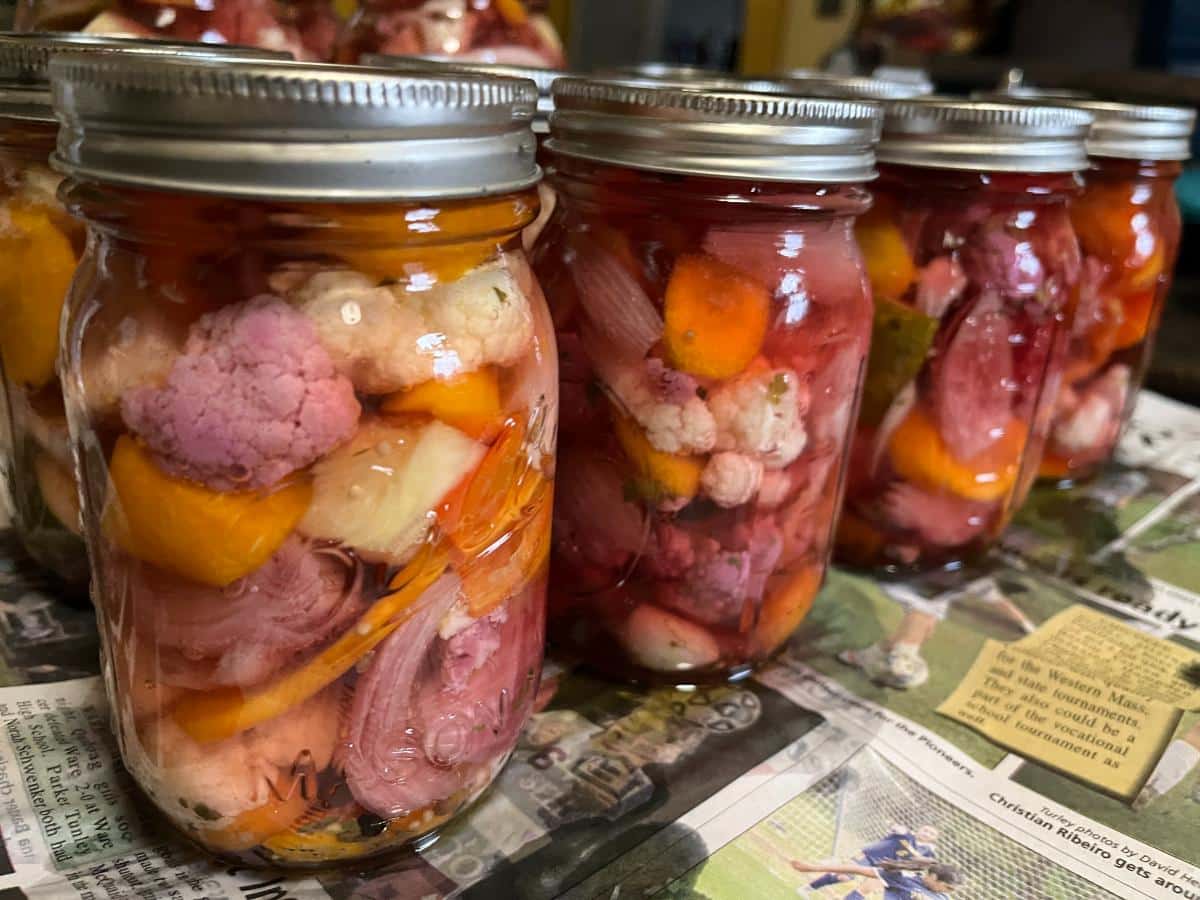
From an environmental standpoint, preserving is a must-do if your goal is to eat more seasonally in order to protect the environment by reducing food miles.
Not only is your food at a higher level of nutrition, but there is little environmental impact from growing food that you grow and preserve or buy from a local gardener, farmers market, or grower.
This includes reducing the carbon footprint of your food from travel and other impacts like pesticide, herbicide, and chemical use. The scale of the grower also comes into play.
It is true that just because a grower is local, they could still be using chemicals that you are trying to veer away from. But it is also true that when you know your grower, you can have the conversation to find out how your food is grown, what practices are utilized, and what goes onto the food and soil your food is grown on. Buying local and organic, of course, overcomes many of these questions anyway.
Plastic and packaging reduction
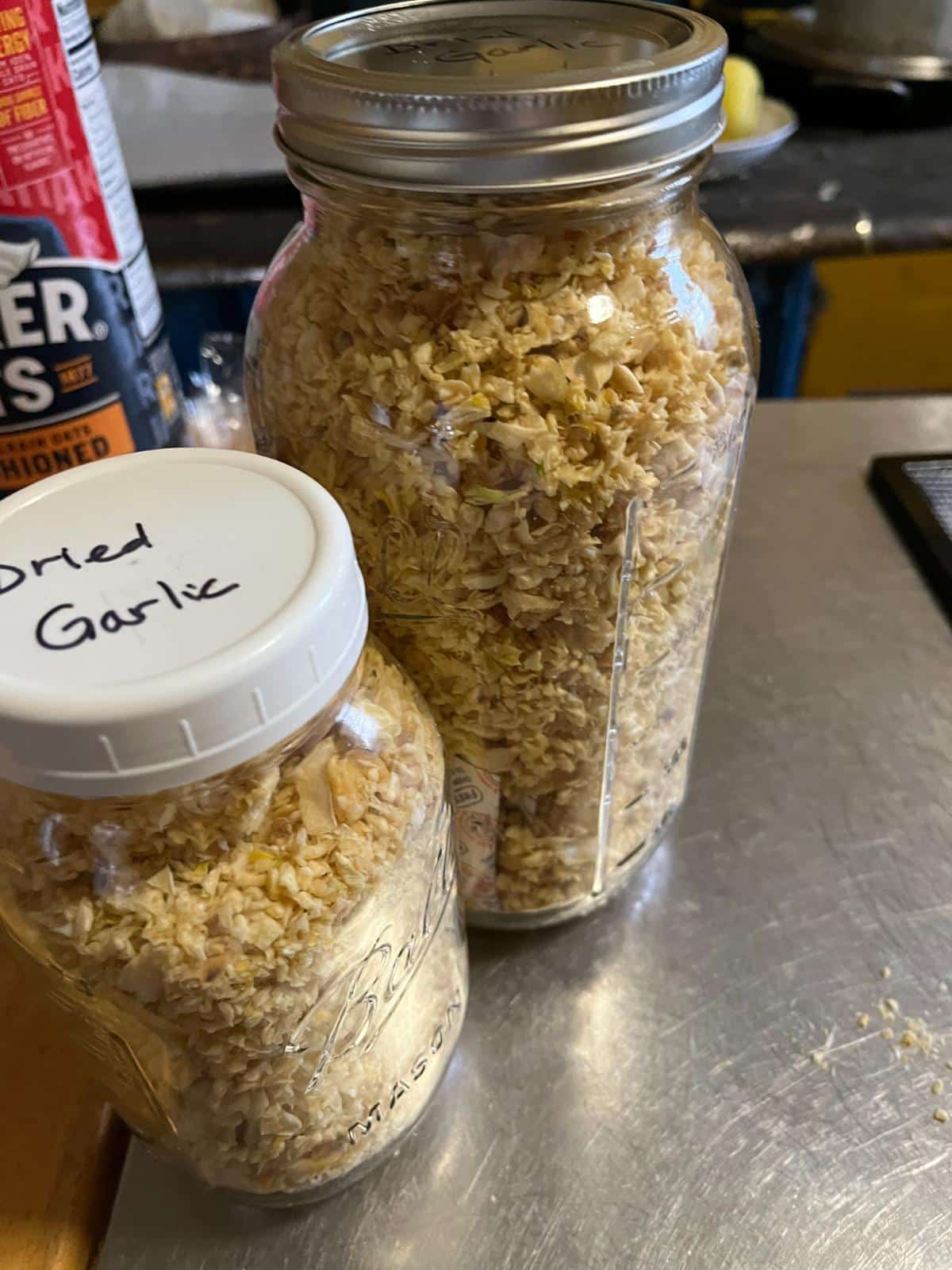
Local foods are much less likely to be packaged in extraneous amounts of plastic and packaging.
If you are growing your own, it’s easy for you to never need packaging, or to use low-impact containers that are not single-use and disposable.
If you are buying locally, there is still typically minimal packaging and waste.
First off, because local growers are going field to market or consumer, there is much less of a need for sturdy plastics and packaging that can go the long haul.
Local growers are also more likely to display and offer products for sale in reusable bulk containers.
Indeed, home growing and buying locally keeps mountains of waste and packaging out of landfills!
Really the only way to eat year round if your goal is local and environmentally sustainable
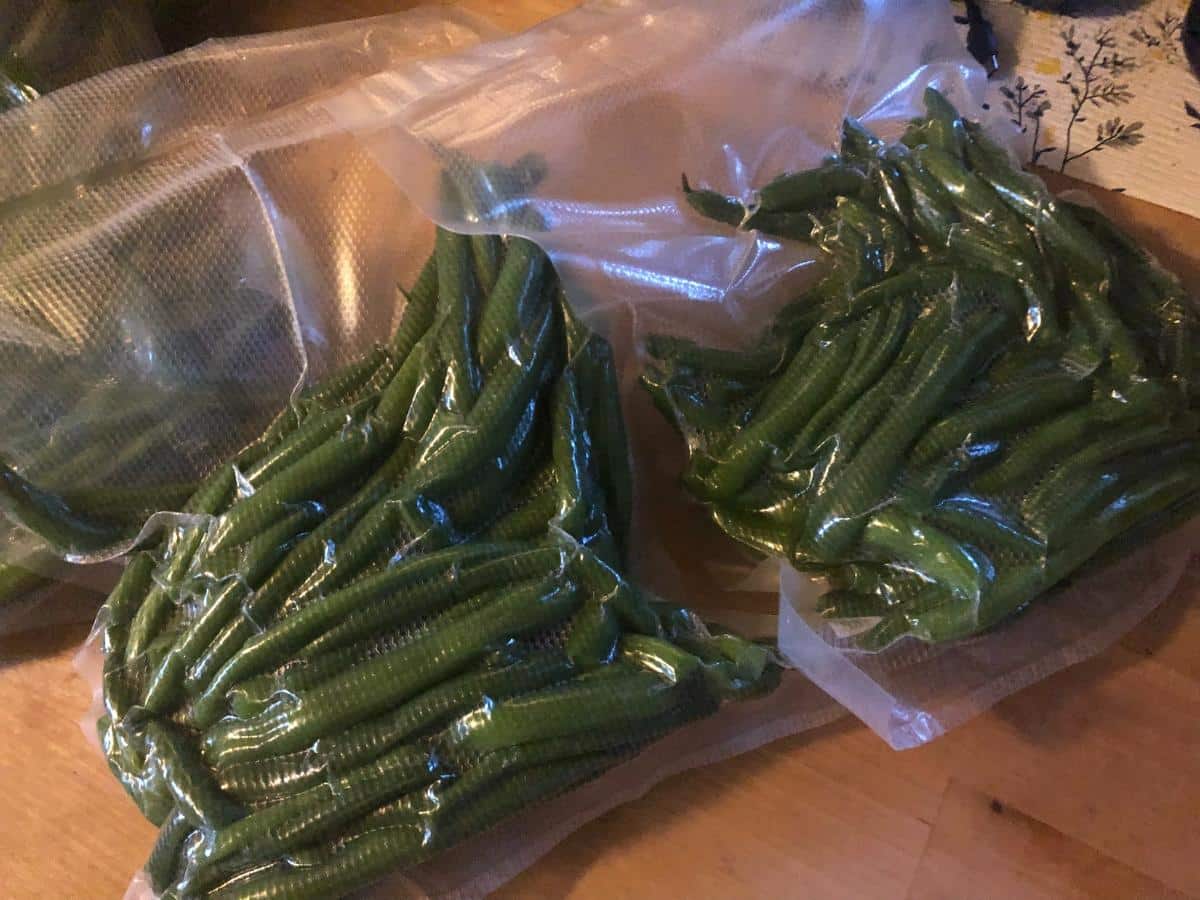
If your goal is to eat more locally and sustainably for the environment, you’ll almost certainly need to do some form of storing and preserving. This is because few people live in a place where they could really grow enough to eat all year round without some form of preservation --even if that form is only cold storage in a basement or cellar.
Think about it. If you live somewhere where winter gardening is not possible, the only way to eat seasonally all year is to preserve local foods when they are in season. There is no other real way to reasonably eat a balanced diet that includes fruits and vegetables if you do not either preserve fresh local food or store it away.
We have many excellent methods of preservation to utilize.
Use them all!
Preserving does not mean you have to endure a diet high in salts or preservatives, either. Modern freezers have made it possible to capture fresh foods at their peak of nutrition and goodness, keep most of that nutrition in the food, and store it without any added preservatives at all. Not even salt!
Eating seasonally is a commitment to going back to a more traditional model of subsisting on locally grown and produced foods. To accomplish this, we need to look at how our ancestors did that before it was an option to fly, drive, or ship food literally around the world.
How did they do it?
Through good storage and preservation techniques. These included drying, dehydrating, stockpiling, cold storage, dry storage of grains, canning, and more.
We can do it, too, but we have to plan ahead and think less about the weekly trip to the grocery store and more about buying and saving food safely for later.
If we want to be as environmentally conscious and friendly in feeding ourselves, we have to accept some changes to our ways. And those begin with getting back to some basics and taking advantage of good modern food storage techniques (like freezing), and buying our food locally when it is at its best.

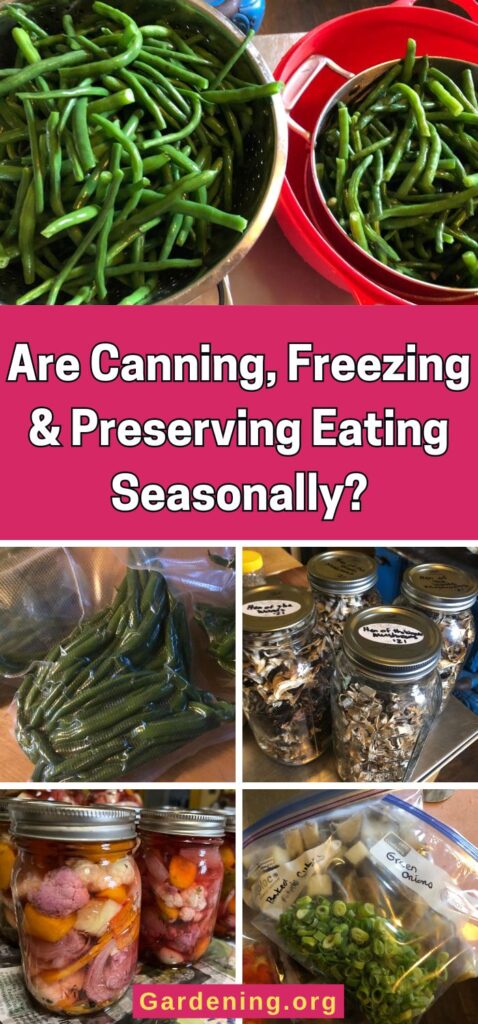
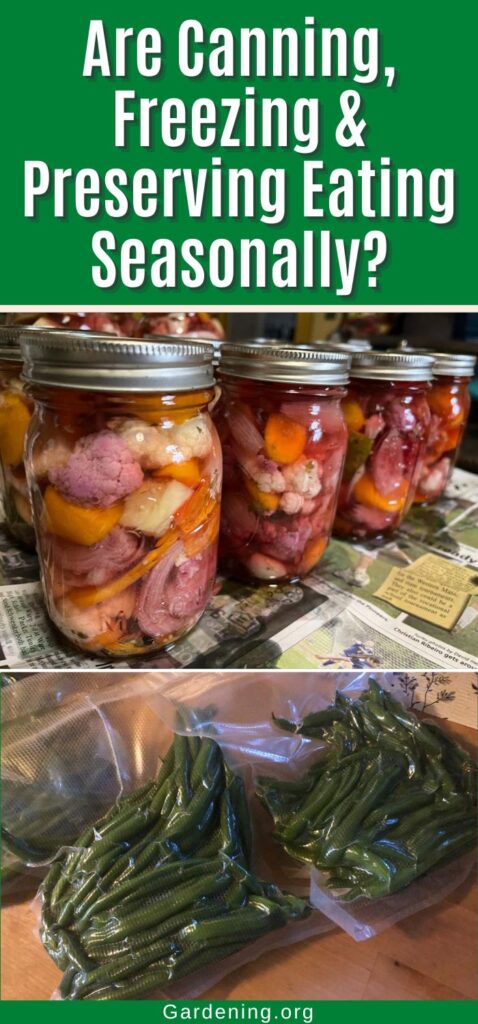
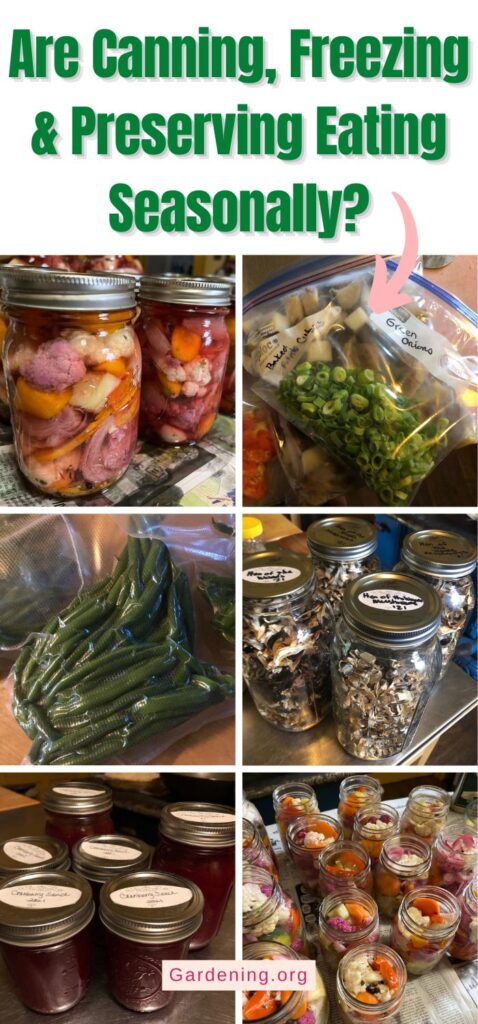
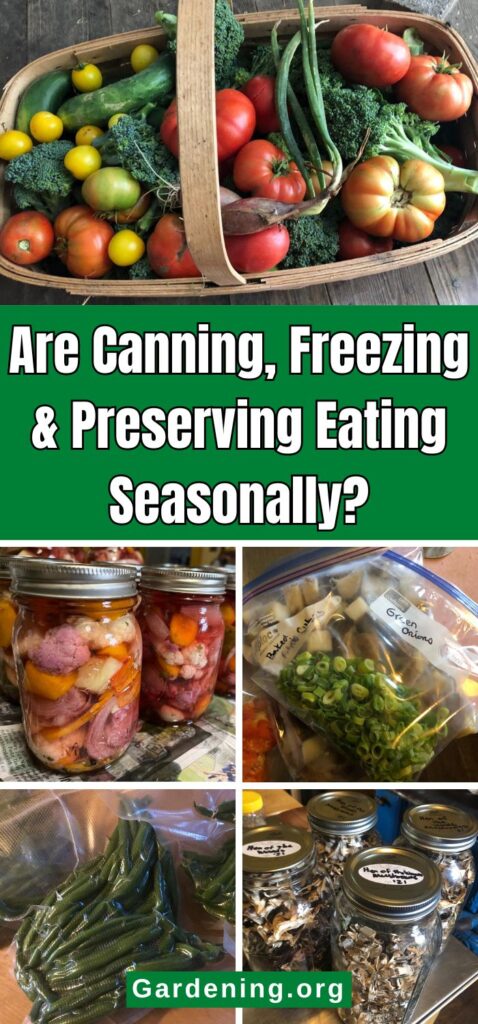


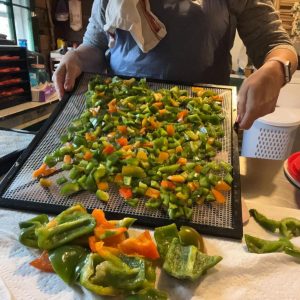
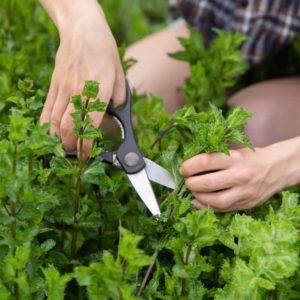
Leave a Reply